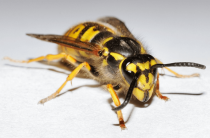Quincke's edema is a manifestation of an allergy, the danger of which is so great that the very life of the patient may be in jeopardy. Anaphylactic shock develops in people who have an acute allergic sensitivity to certain substances. In such a patient, literally anything can cause an acute reaction.
Quincke's edema, as a disease, is an acute swelling of the mucous membranes, as well as adipose tissue, which is located under the skin. Edema processes develop very quickly and are intense in nature, in which tissues can increase several times. These phenomena occur as a result of the release of antibodies in relation to certain substances. Antibodies serve as regulators of allergic processes in the body, acting on immune cells containing biologically active substances involved in inflammation reactions. The impact of these substances on the vessels of the mucous membrane and adipose tissue causes their expansion. As a consequence, their ability to retain fluid deteriorates. It accumulates in the tissues, which causes the appearance of edema.
Almost any substance can provoke Quincke's edema reactions. Basically, Quincke's edema is observed with food, drug or insect allergies (allergy to animal venom).
Symptoms of angioedema
The very name of the disease indicates the main symptom - edema. Most often, it affects the skin of the face and limbs. Quincke's edema passes painlessly. A sick person only experiences stretching in those places where the disease develops. Integuments in those places where the reaction proceeds are somewhat discolored. But there is no pronounced change in skin color. Often the development of Quincke's edema is preceded by urticaria.
 Urticaria is a skin disorder that is characterized by the appearance of a red rash that looks like slightly swollen round red blisters.
Urticaria is a skin disorder that is characterized by the appearance of a red rash that looks like slightly swollen round red blisters.
With Quincke's edema, urticaria has its own specifics. It manifests itself instantly, capturing more and more areas of the skin before our eyes. At the same time, the rash tends to merge into one large focus. In this case, there is an extremely intense itching. A great danger in Quincke's edema is laryngeal edema, which, without properly provided emergency care, can result in the patient's death from oxygen starvation. If it is manifested in an intense form, then the mucous membrane of the larynx, swollen during edematous phenomena, simply blocks the airways. In this regard, swelling of the tongue is also a great danger. You can recognize swelling of the larynx as follows:
- Breathing becomes more difficult, a person inhales air with considerable effort;
- Panic attacks are on the rise;
- The voice becomes hoarse;
- The face and fingers acquire a bluish color, due to lack of oxygen;
- Possible fainting.
Nausea, vomiting, stomach pain, diarrhea indicate that the gastrointestinal tract was involved in the general symptoms. Quincke's edema is also dangerous because the redistribution of fluid can provoke a critical decrease in vascular resistance. This threatens with cardiac arrest without properly carried out emergency measures.
Emergency care before the ambulance arrives
Before the arrival of the medical team, you need to do the following:
- Eliminate exposure to the allergen. If the symptoms are provoked by an insect bite, remove the sting, if the allergen is ingested with food, eliminate its remnants from the oral cavity, if allergic to the drug, stop its intake;
- Fill the room with oxygen as much as possible if there is a sick person in it;
- Release the larynx from constricting clothing;
- When an allergen enters, the use of gastric lavage is prohibited so that vomiting does not enter the lungs;
- When calling the medical team, briefly and clearly list the symptoms that are observed in the patient.
Perhaps this is all that can be done for the patient. The remaining measures are already being applied by competent specialists.
Removal of angioedema
Upon arrival of the ambulance, emergency drug treatment is applied. If there is a violation of breathing or a drop in blood pressure, an adrenaline solution is injected. Corticosteroid drugs and antihistamines are administered intravenously or intramuscularly. Their dosages are significantly higher than those used for planned therapy. In some cases, it may be necessary to carry out an operation with a violation of the integrity of the larynx, to resume the supply of oxygen.
What does the patient need to know?
The patient, first of all, when observing a tendency to develop Quincke's edema, should contact an allergist to find out the cause of his provoking. In the future, it is necessary to avoid getting the allergen into the body as much as possible. The patient needs to be familiar with the methods of emergency care, both pharmacological and non-pharmacological in nature, in order to apply appropriate measures on their own if necessary.
If there is even the slightest chance of contact with allergens, an emergency treatment kit must be carried with you. If you have a tendency to develop Quincke's edema, be sure to inform your doctor in order to conduct a test diagnosis for drug tolerance.










